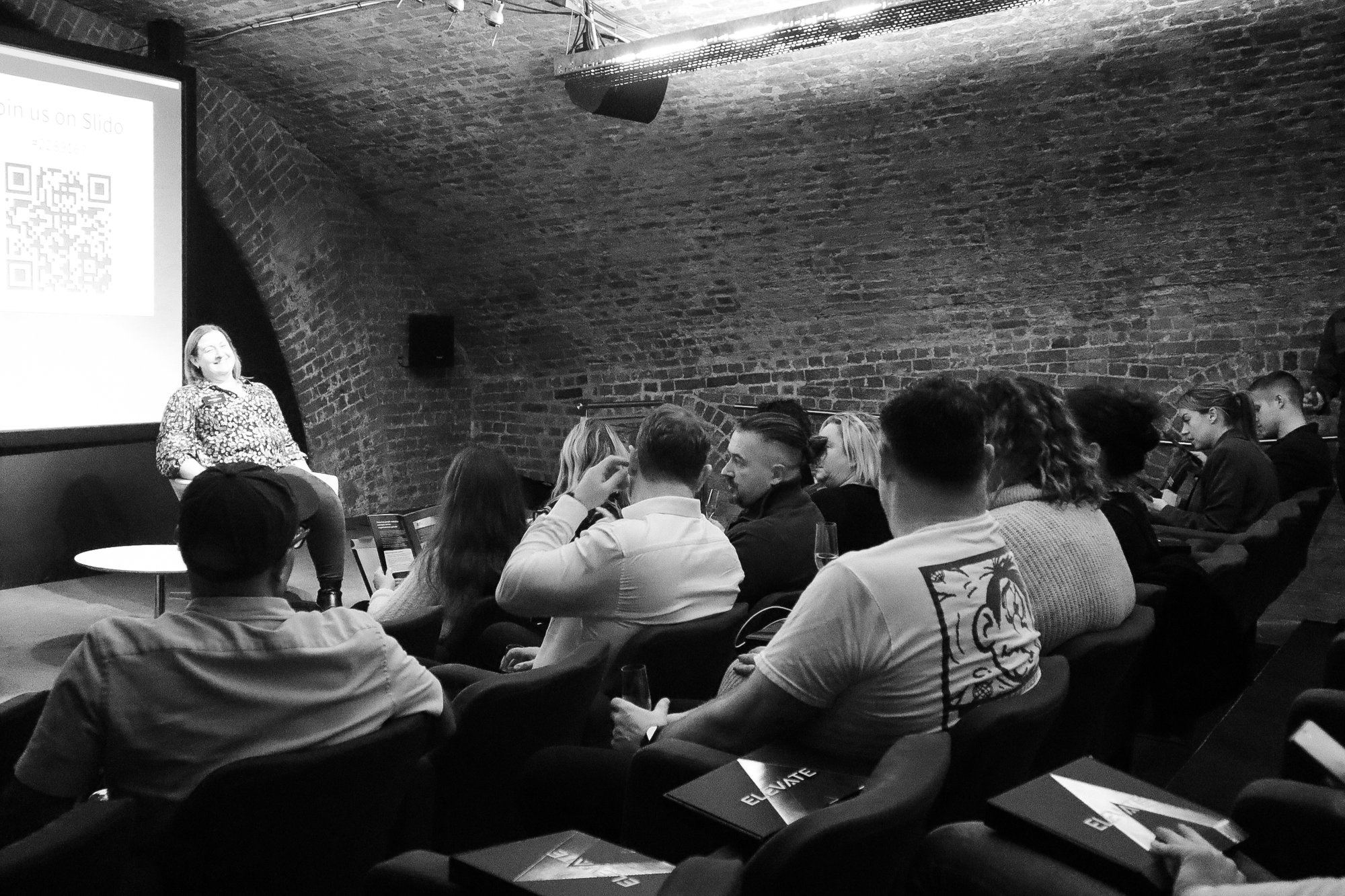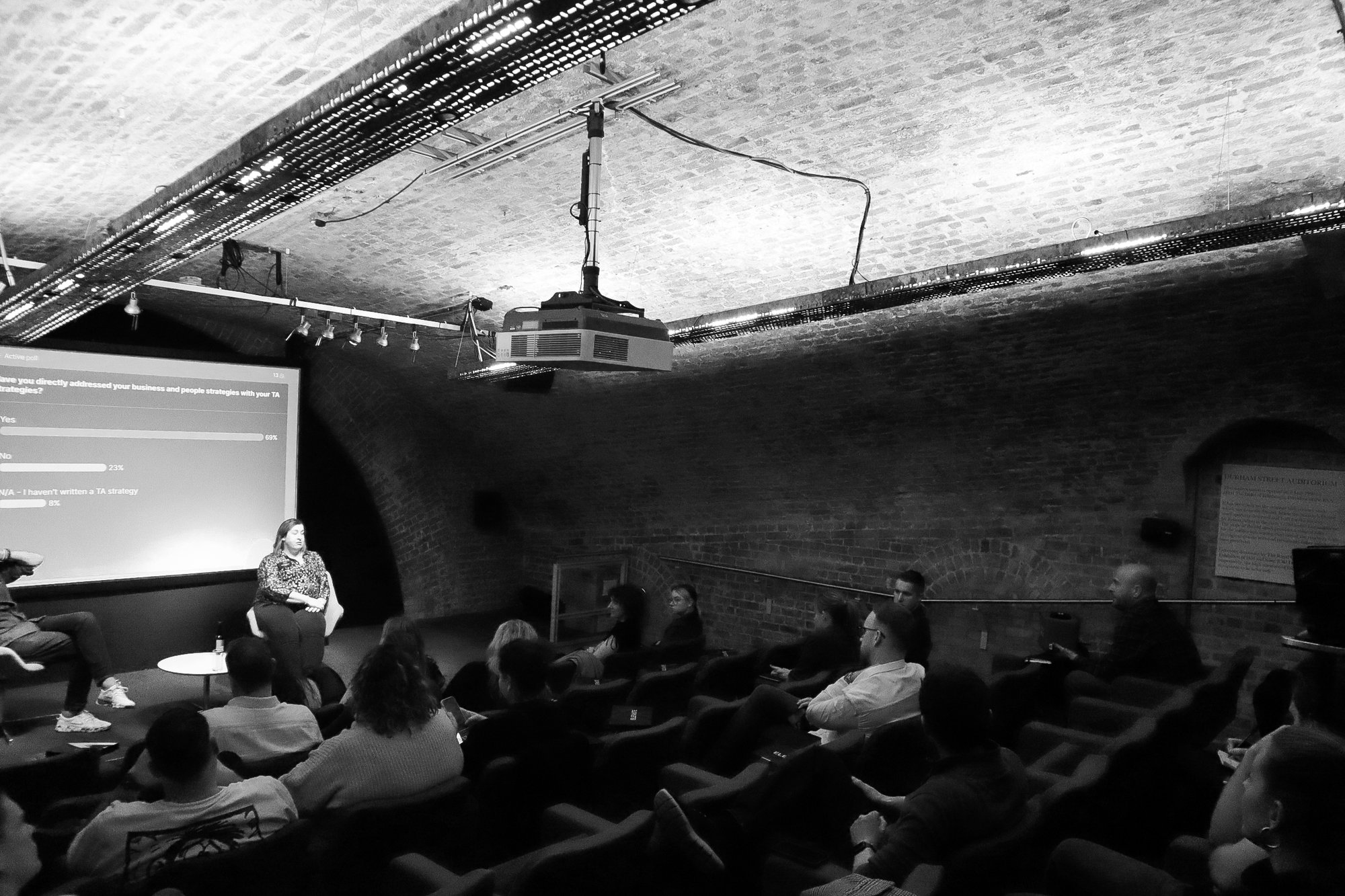Elevate Round Up
How to engage your CPO with your TA strategy
Overview
On 23rd November, Emily Bowller, People Director for Ocado, joined us at Elevate to give her perspective on engaging your CPO with your TA strategy. She guided the conversation on some of the TA’s biggest barriers, and what she as a People Director looks for in a successful TA function.
From the importance of having a clear line of sight to your organisation’s objectives, to working in unity with the wider people team to meet shared goals, it was a truly in depth look at the subject.

“I think it’s about transcending what you are actually physically doing in your role and thinking more about what opportunities can you get within it in order to be seen as more commercial, data-driven, knowing the market and what you want to achieve”
Key takeaways
What barriers do TA professionals face in their journey to the CPO?
We first asked the room how many felt that if their CPO, HRD or CHRO was to leave, they would be succeeded by the TA director. The answer to this was largely not. However, when we asked how many thought that the TA director should be considered as a natural successor, the answer was a definite yes.
TA directors know they can get the job done, so why is the move from TA director to CPO so challenging?
“I don't think you get the opportunities to be commercial. I don't think you get brought in at the right times in order to be able to understand, show your expertise around the future and our pipeline. I don't think you get to showcase it.

Barrier #1: TA is not always strategically aligned to People and Business goals
As TA Leaders, having a strong TA strategy is at the core of what we do. But we have to make sure that our strategies truly drive the growth of our organisations. Meaning it has to align with the people and business goals set out by our businesses.
“The goals for TA, the goals of the business, and the goals for the people team are not necessarily in sync when it comes to not only commerciality but also strategic alignment.
For example, TA might want to reduce the process time to three weeks as opposed to six weeks, but if we then go to the business goals, how is that going to help whatever it is that we're driving on the back of it? If we look at the people goals, how is that going to drive whatever it is we're going to go after?
TA knows what best in class looks like. It’s something we strive for, but if the business isn't on board with that goal, our TA strategies won’t have the desired impact.”
When you understand your CPOs shifting priorities and actively tailor your strategy to meet those changing needs, you’ll truly be able to demonstrate the impact TA has in achieving organisational goals."

Barrier #2: the TA function often acts in silo
TA can be guilty of just being TA - and not seeing itself as a function of a wider people team. In it's most extreme cases a TA function can see itself in direct competition with the other functions of a People team.
Many of the TA Leaders in a room shared stories from their own experiences where Recruitment was often seen as the source of business challenges, but other people teams get the credit when things are going well.
Of course, team collaboration has to be a two way street - but bridging the silos between HR and TA can help to position TA Leaders as CPO successors.

How can TA Leaders start to position themselves as successors to the CPO?
If TA Leaders aren't given the opportunity to get strategic, and work collaboratively, how can they start to change that narrative?
Emily says, "I’ve seen that TA directors will go into wider talent roles, experiencing a larger breadth of the learning and development, succession, talent, planning and recruitment. Then you start moving into the world with CPO. Instead of going straight from recruitment you begin to broaden your skillset.
As soon as you start moving into talent and you start talking about succession and you start talking about development plans, you start engaging with the business.
You start to ask yourself, “where are the gaps? What do I need to focus on? Where should I be pipelining?” That’s where your skills and experience can shine. That's where you really excel.
Once you begin to think beyond what you’re doing in a purely TA role, you’ll be able to break down those barriers. I think it’s about transcending what you are actually physically doing in that job and thinking more about what opportunities can you get within it in order to be seen as more commercial, data-driven, knowing the market and what you want to achieve.”
And Graeme agreed: "One of the big fights that you have (or should have) around talent acquisition is reducing vacancies. To tackle that, you have start building a brilliant internal talent function.
Once you do, the conversation changes from talent acquisition to talent.
The more this conversation changes, the more begin to communicate the changes you know will really make a difference. When do, you're contributing your expertise as a TA professional to a wider goal. That’s the key to making the leap from TA director to CPO."
Want early-access to our next Elevate event?
Spaces are limited and reserved for in-house TA Leaders. If you'd like to join our next event, make sure you're on our mailing list.
Everything we do exists to support our purpose of elevating people leaders in their role, career and function
We want to make talent the engine room of every organisation. We want to change how talent acquisition and people leaders see themselves and their ability to drive business performance.
Whether you're new in role or in the midst of a transformation, Caraffi aims to elevate your capability, impact and reputation within your business and beyond.
Contact us
10 Bishops Square, London, E1 6EG
0203 8622 800
info@caraffi.co.uk


